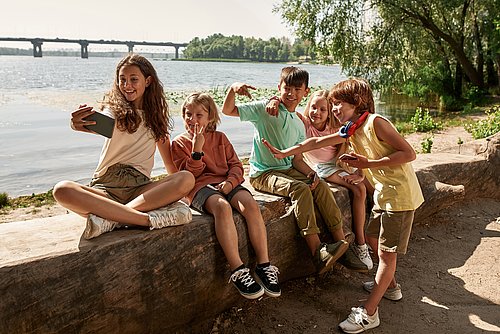
TRENDS
Which brands are best at talking with children?
How they do it, what channels do they do it in and why it pays off.

How does children's marketing work today? Tim Höchel, President of the We are Family agency network, gives an overview - here and in the trade magazine The Drum.
Brands targeting children and families face a unique challenge. They must navigate a delicate balance between marketing to parents, who often act as gatekeepers, and directly engaging with their primary consumers, the children. The advertising industry grapples with when marketing to kids is appropriate and when it crosses ethical lines. Additionally, brands must contend with a web of complex guidelines and regulations that vary from one country to another.
Traditionally, marketing strategies involved appealing to parents while simultaneously engaging children. However, the landscape has evolved significantly. The decline of linear TV viewership, exemplified by the closure of CITV after 40 years, replaced by the online streaming platform ITVX Kids, and the BBC's move to shift CBBC to iPlayer by 2025, demonstrates that families and children are increasingly turning to streaming services like Netflix, Disney Plus, Paramount+, and YouTube for their content. As a result, traditional TV ads directly targeting kids are becoming less common.
When launching a new brand, especially in the children and family space, the typical approach involves utilizing social media and influencers to reach new users or customers. However, this strategy can be challenging in the children's market.One brand that has ingeniously navigated these challenges is Toniebox. It offers a mini speaker operated using tactile character-based figurines and has established a strong content and licensing strategy by partnering with well-known and trusted storytelling brands like Disney, Paddington, and The Gruffalo. This approach makes Toniebox instantly recognizable to kids, as they are already familiar with the characters, and it builds trust among parents who purchase these products.
For innovative brands, particularly in the gaming sector, engaging directly with children presents exciting opportunities. Games like Roblox, Minecraft, and Adopt Me have tapped into a sweet spot. These social and sandbox games allow kids to explore and create non-linear experiences, engaging them without overt marketing efforts. These games behave like social platforms, driving organic growth as kids invite their friends to join, creating their communities. They seamlessly blend gaming, social media, education, entertainment, and commerce, providing limitless and immersive experiences.
The success of these brands lies in expanding and refreshing the content, ensuring longevity, and generating brand loyalty over the years. While TV-based juggernaut brands like Bluey and Paw Patrol still hold influence, they must find new ways to engage children in a rapidly changing digital landscape.
Want more? Read the full article from our CEO Tim Höchel about today's challenges in children's marketing on www.thedrum.com


